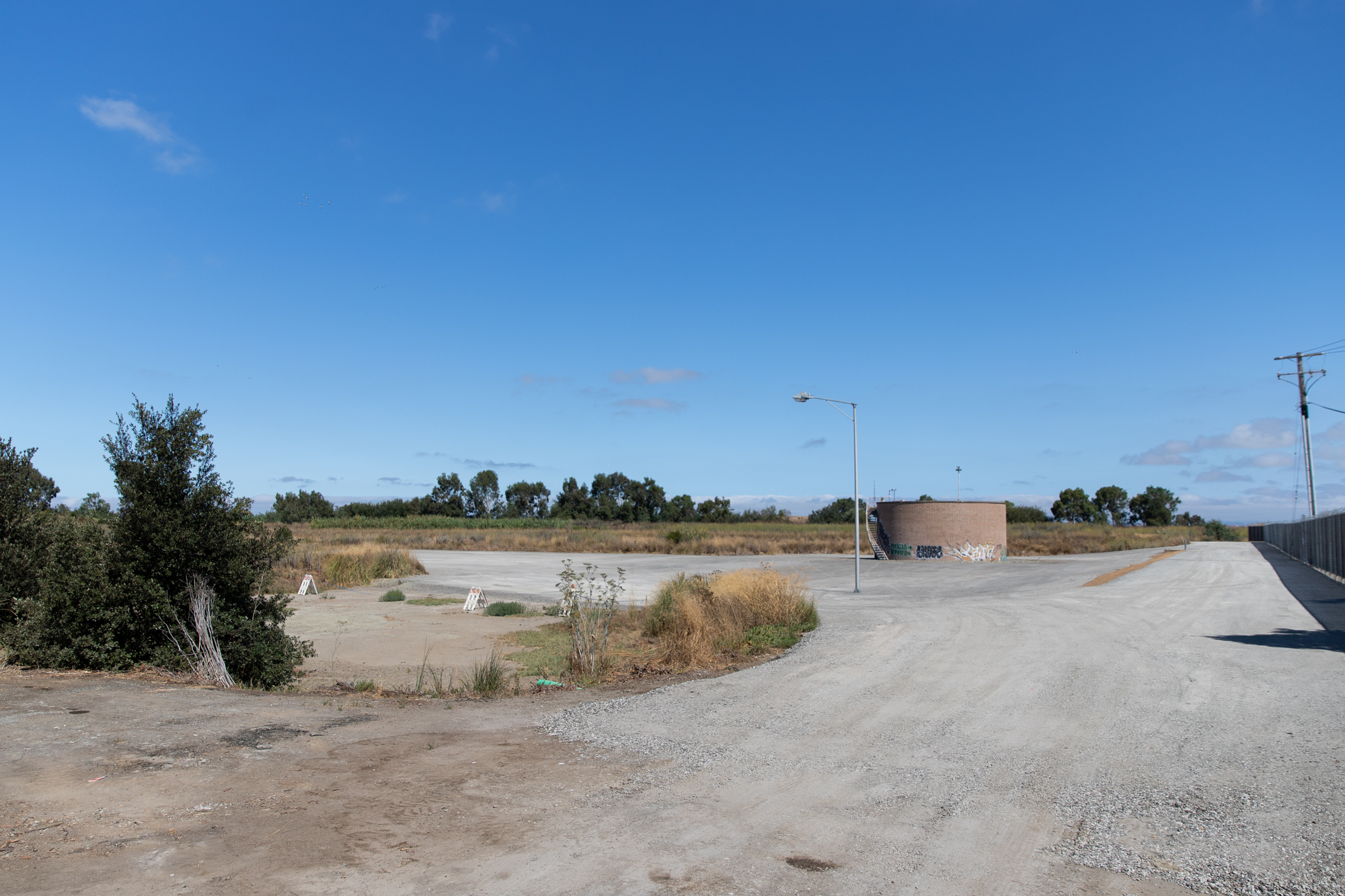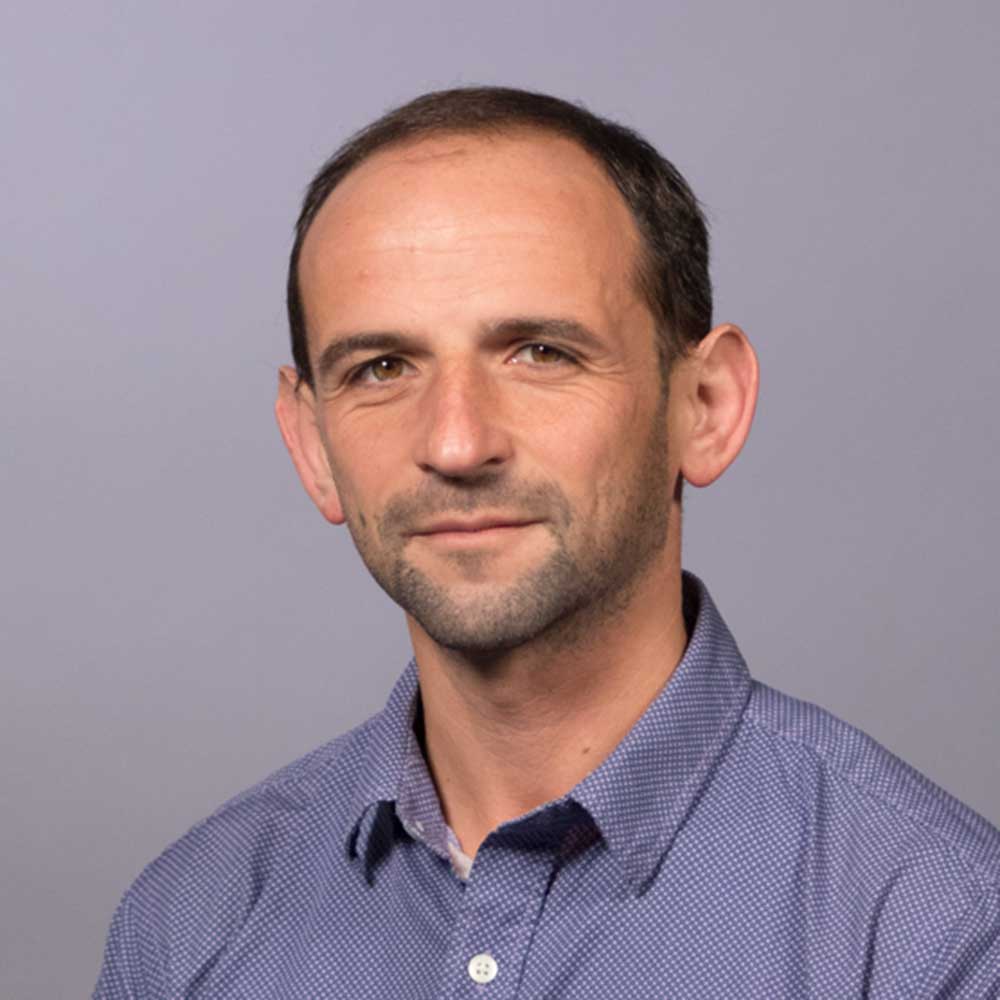Sheryl Klein received a stark reminder on Saturday morning that Palo Alto has a long way to go when it comes to solving its homelessness problem.
Klein, chief operating officer at the nonprofit Alta Housing, said she was walking through downtown when she saw a homeless individual sleeping in the entryway to the city's Development Services Center on Hamilton Avenue, across the street from City Hall.
"It struck me as so ironic that here in downtown Palo Alto, one of the wealthiest cities on the Peninsula, we have a community member who does not have shelter and is sleeping across from City Hall," Klein said Monday night. "This is a social and economic problem that we need you, our leaders, to address."
Her comments came as the City Council was preparing to approve its boldest solution yet — an interim housing facility that would be constructed from modular units at a city-owned site near the Baylands and that would be able to provide temporary housing for 136 individuals in its 88 apartments. In unanimously endorsing the project, the council reaffirmed its decision from August and directed staff to apply for a state grant through the Project Homekey program, the same program that Mountain View relied on to quickly build and open a similar facility earlier this year.
Much like the Mountain View site, the Palo Alto one would be operated by LifeMoves, a nonprofit that runs the Opportunity Services Center on Encina Avenue. The new two-story facility would feature 64 single apartments and 24 that can accommodate three people. It would occupy a parcel at 1237 San Antonio Road, a city-owned site that once included a water treatment plant and that in recent years has been used largely for construction staging. It would provide housing for 90 to 180 days, with the goal of moving participants into permanent housing.
For the council, the biggest question mark remains funding. If the city obtains money through Project Homekey, the state program could provide operating subsidies of between $1,000 and $1,400 per unit for two years, provided the city and LifeMoves can commit to a funding plan for five years. But while LifeMoves officials said Monday that they are committed to working with the city to work out a funding plan that does not leave the city on the hook for operating costs beyond this time, that plan has not yet been formed. Given the uncertainties and the city's dismal budget picture, council member Greg Tanaka questioned whether the city should be proceeding with the project and requested that staff perform an analysis to see if the site can accommodate other uses that would be more profitable.
"It seems like we're being asked to approve a bunch of things tonight without actually knowing how much it's going to cost," Tanaka said. "Especially given our financial situation, it makes me kind of worried."
He ultimately joined his colleagues, however, in declaring a state of emergency when it comes to homelessness and in voting to support a project that would address it. The biggest point of contention came over whether the city should move ahead with a two-story building or pursue a three-story facility with 136 beds and 208 units. While some residents and two council members — Greer Stone and Alison Cormack — favored the larger facility, the majority opted for the two-story design, which Mayor Tom DuBois and council member Lydia Kou suggested is more compatible with the project's Baylands setting.
Stone and Vice Mayor Pat Burt both argued that the project will go a long way to providing support for unhoused individuals. The county's last point-of-time count, which was conducted in 2019, showed that Palo Alto had 313 unhoused individuals, of whom 292 slept in cars, tents or on the street. While Tanaka questioned whether the project will really be effective in visibly reducing the homeless population, suggesting that other unhoused individuals will replace they ones that the city will be sheltering in the new facility, Stone pushed back against his line of questions and argued that it's important to help those who are currently unhoused.
"So often, unhoused people are an invisible part of our community and we don't seem to embrace them as equal as the person living right next door to them," Stone said. "We really need to change that."
LifeMoves CEO Aubrey Merriman pointed to the Mountain View project, which had been singled out by Gov. Gavin Newsom, for its innovation, as an example of what's possible.
"It showed that when we prioritize homelessness as a crisis, that we can build rapidly, effectively and sustainably and we have the ability to match funds being put forth by the county and the state, and all our work is done in alignment with the Santa Clara County Community Plan to End Homelessness," Merriman said.
The LifeMoves organization, he said, is committed to the project for the "long haul." He noted that 86% of the families and 67% of individuals who engage in the organization's programs return to stable housing.
"And we understand that delivering our services in a caring community like Palo Alto is a lot more effective and efficient than trying to deliver those same services in the streets and encampments," he said.
Numerous residents urged the council to think bigger. Hamilton Hitchings said that the city should take advantage of the rare opportunity to build something on precious public land and to explore a three-story facility.
"Is it financially feasible to do three stories?" Hitchings asked. "We're going to do this project anyway. Can we spend a little more money to get three stories, so that we can get more families and more single folks in there?"
Resident Anna Botelho similarly suggested that the city should consider the larger facility.
"We live in such a wealthy community," Botelho said. "When I walk on University Avenue and I see homeless folks there, it just breaks my heart. … We have an amazing opportunity here and this is the time to take advantage of it."



Comments
Registered user
Midtown
on Sep 28, 2021 at 10:28 am
Registered user
on Sep 28, 2021 at 10:28 am
We keep wanting to house the homeless and are asked to lavish them with pity, goods and good will. What is this "transition housing" in Palo Alto? Again, I ask what are the metrics for making this temporary? Palo Alto used to be a socioeconomically diverse community, a place one wanted to live. That was decades ago. The downtown , University Avenue, is seedy with homeless people sprawled across the sidewalks, their garbage piled nearby. El Camino is lined with cars and RVs. Jobs go begging. Sorry, I have no sympathy, let alone empathy for those who come here for a lifetime of handouts. Stop complaining about the high cost of living here and go to a place where you can afford to put a roof over your head. Of course, you might have to actually get a job ...
Registered user
South of Midtown
on Sep 28, 2021 at 11:09 am
Registered user
on Sep 28, 2021 at 11:09 am
Compatibility with the Bayland’s setting is an absurd comment and reason to only build a two story building. Once again our leaders are foregoing an opportunity to address this issue as much as we could. I’d say build five stories and do the same thing on other city owned land. As for you Stepheny, many unhoused people do have local jobs and I’m not sure what jobs you mention “go begging”. The housing is transitional by design and the metrics you claim are lacking is the limited length of stay time. I’m also sorry to hear you have no empathy or sympathy but I guess it’s positive you at least admit it. I suggest you examine your erroneous assumptions and find a better outlet for your anger than picking on the unhoused.
Registered user
College Terrace
on Sep 28, 2021 at 11:22 am
Registered user
on Sep 28, 2021 at 11:22 am
Last night's City Council meeting was one of the best, most positive, and productive meetings in AGES. Progress was made on housing for the disabled and housing for those who are unhoused. Even watching from home I was moved by a sense of community that has been dormant for too long. THANK YOU, CC and all who are working to bring these two projects to fruition.
Registered user
Downtown North
on Sep 28, 2021 at 4:48 pm
Registered user
on Sep 28, 2021 at 4:48 pm
This will only work if police and social workers are allow to remove those sleeping on the streets.
I'd love to get rid of the guy who has been sleeping in his van for over a decade parked on our street but there seems to be no legal way to make these people move on. Too bad we got rid of the metal hospitals decades ago and the laws to remove people from public areas. We need them back to deal with the problem we have now.
Registered user
Midtown
on Oct 19, 2021 at 9:25 am
Registered user
on Oct 19, 2021 at 9:25 am
Two thoughts:
There is nothing so permanent as a temporary solution.
Especially in Palo Alto. Just look at the road furniture installed south of Oregon expressway in the failed "make a bike lane on Ross Road" debacle. Or the "trial" of the Arastradero Rd. traffic "calming". "Temporary" is standard Palo Alto process of lying to residents.
Build it and they will come. This will ring true. And, in all likelihood, this "temporary" facility will, no doubt, expand. Soon we will have all kinds of "temporary" housing solutions in the nature preserve that was the baylands in bygone days.